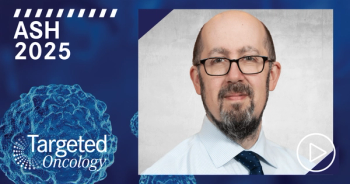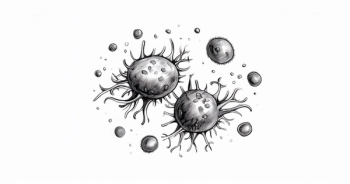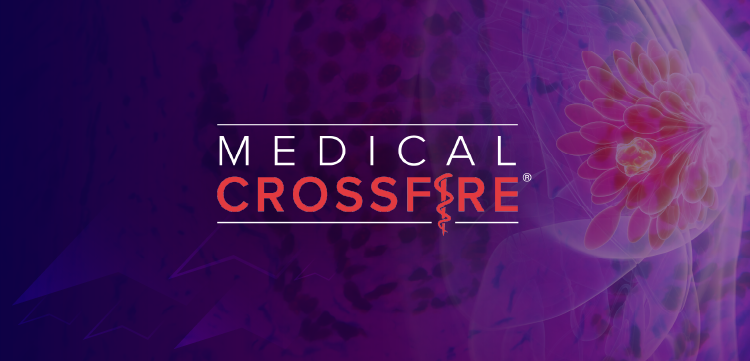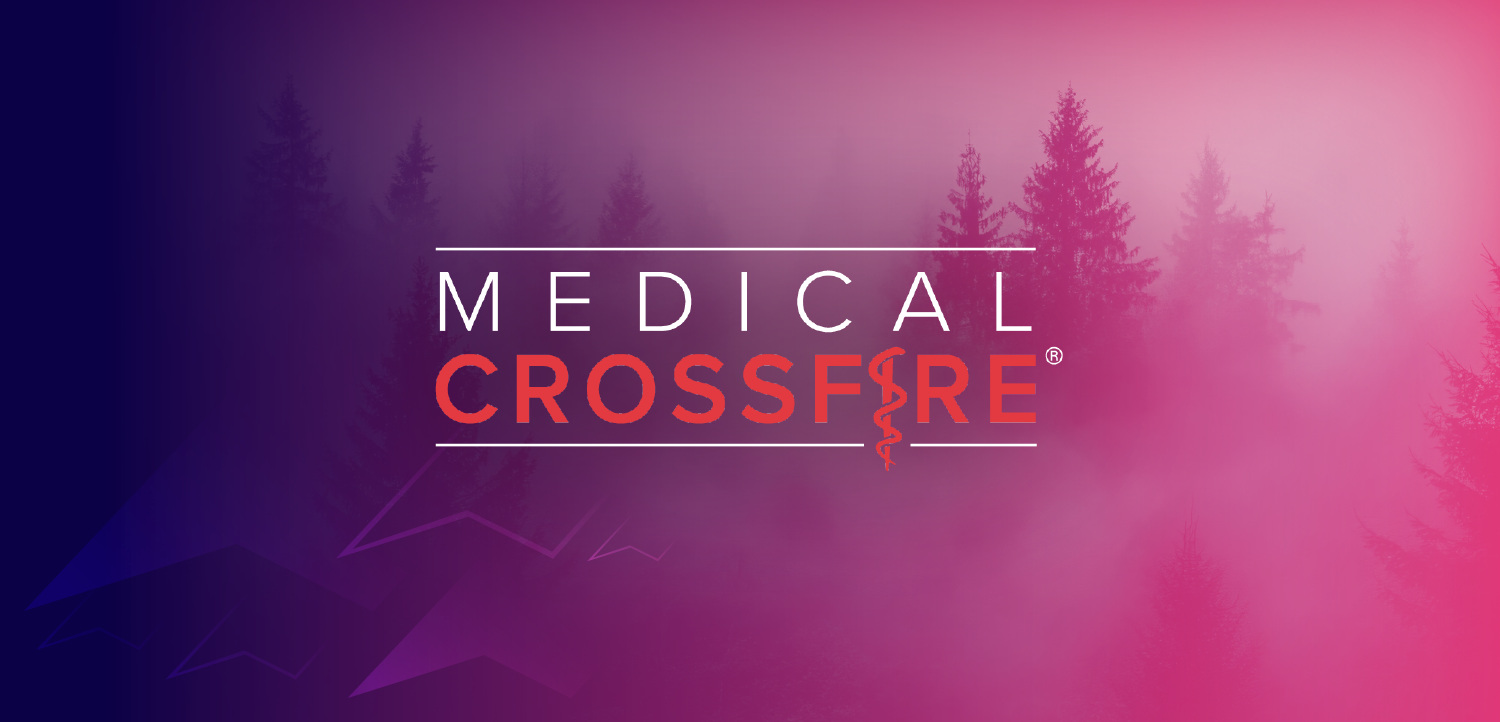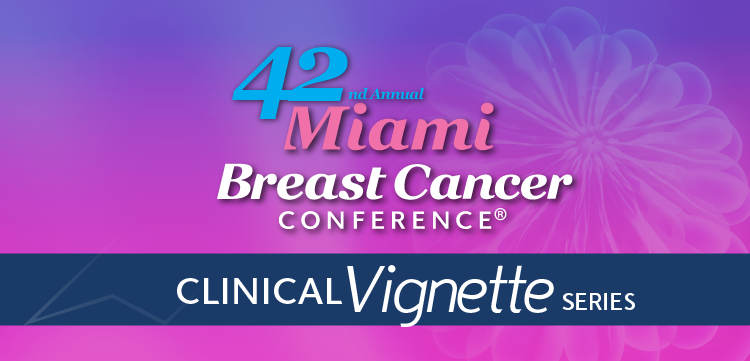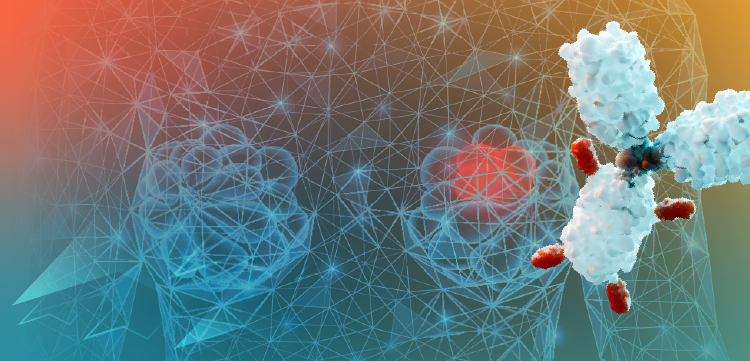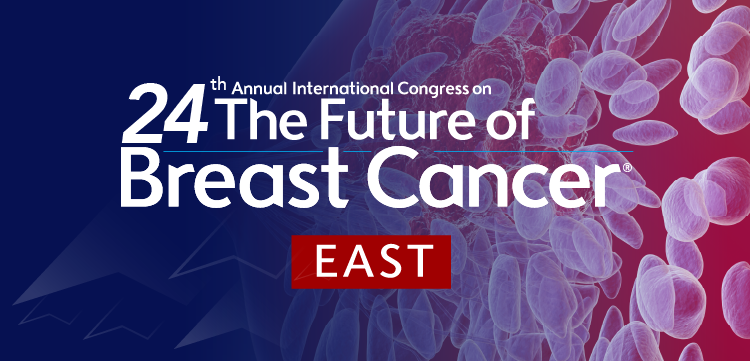
Addressing Treatment Gaps in High-Risk CML in Blast Phase
Akriti Jain, MD, discussed how emerging data on non-ABL1 mutations is reshaping chronic myeloid leukemia management.
While the management of chronic myeloid leukemia (CML) has evolved significantly over recent years, key challenges remain in optimizing outcomes, particularly for high-risk patients and those progressing to blast phase.
“[T]here are no standardized treatment options or regimens for these patients, and it does require a multidisciplinary team with providers that are well versed in treating blast phase,” explained Akriti Jain, MD, in an interview with Targeted OncologyTM.
Data has shown the prognostic impact of non-ABL1 mutations like ASXL1 and RUNX1 in chronic-phase CML, but according to Jain, Department of Hematology and Medical Oncology, Cleveland Clinic, critical gaps exist in blast-phase treatment as there are a lack of standardized regimens. She emphasized the importance of prioritizing mutation testing per NCCN guidelines, avoiding first-generation TKIs in mutation-positive patients, and referring blast-phase cases to specialized centers for trials.
In the interview, Jain further discussed how emerging data on non-ABL1 mutations is reshaping CML management.
Targeted Oncology: Please provide us with some background of this abstract?
Jain: We [were] presenting an abstract on impact of non-ABL1 mutations on outcomes in patients with chronic myeloid leukemia. As we know these days, patients with chronic myeloid leukemia have a life expectancy of normal individuals or people without cancer, so we are always trying to see what we can do to continue to improve these outcomes that we have for our patients [with CML]. And we have seen in small retrospective studies that non-ABL1 mutations like ASXL1 and RUNX1 can have an impact on rates of progression to blast phase or accelerated phase from chronic phase of CML. It can impact rates of major molecular response or major molecular remission, as well as the success of treatment-free remission.
So, we wanted to see in our center, which is Cleveland Clinic, where we treat a lot of [patients with] CML in chronic phase, and we do have access to next generation sequencing through our in house laboratory, retrospectively, we wanted to look at patients that have had next generation sequencing or mutation testing done in chronic phase CML, if they had mutations, what impact that had on overall survival, event-free survival, and failure-free survival.
What are the primary challenges in treating patients with chronic myeloid leukemia in the blast phase?
Chronic myeloid leukemia in blast phase is one of the complications of chronic-phase CML that we want to avoid. I think the biggest thing we really focus on is compliance. A lot of patients, especially younger patients (where we see blast-phase CML), have been through multiple tyrosine kinase inhibitors [TKIs] used for CML treatment, and they have "burned through" some of these TKIs because they were not taking them consistently. This can lead to mutations in the ABL1 tyrosine kinase domain, causing resistance. Resistant disease then leads to progression.
So, the first challenge is compliance to prevent progression into blast phase. Once a person progresses, the biggest challenge—which we’re also trying to address through another abstract at ASH via the Cure CML Consortium—is how to treat blast-phase patients. There are no standardized guidelines on what to use. We often borrow regimens from acute myeloid leukemia [AML], extrapolate them to blast-phase CML, and add TKIs. But there’s no clear guideline or prospective data on whether one regimen is better than another. That is the other major challenge in treating the blast phase.
How do second- and third-generation TKIs compare with first-generation TKIs in terms of response rates in this space?
Comparing second- and first-generation TKIs is becoming more important. We now have newer approvals—for example, asciminib [Scemblix] was recently approved for frontline chronic-phase CML treatment—and multiple newer TKIs in clinical trials. Another key factor is that some first-generation TKIs, like imatinib [Gleevec], are becoming generic, making them substantially cheaper and reducing financial toxicity for patients.
The 3 second-generation TKIs—nilotinib [Tasigna], dasatinib [Sprycel], and bosutinib [Bosulif]—have each been compared with first-generation TKIs in separate trials: DASISION for dasatinib [NCT00481247]; ENESTnd for nilotinib [NCT01784068]; BFORE for bosutinib [NCT02130557]. All 3 trials showed that second-generation TKIs led to major molecular remission sooner than first-generation TKIs, but none have demonstrated a survival benefit because CML patients live so long that much longer studies are needed.
How I approach these patients is with the various risk scores. If they are low-risk, I would definitely consider a first-generation TKI, especially based on cost, affordability, and insurance. If they are intermediate to high-risk, I would prefer going with a second-generation TKI, especially in this era of treatment-free remission.
What role does chemotherapy combined with TKI therapy play in improving outcomes for these patients?
In CML, we have largely moved away from chemotherapy. For chronic-phase and even accelerated-phase CML, we almost never use chemotherapy. If patients are resistant to ≥3 TKIs, we consider transplant for potential cure. Chemotherapy comes into play only in blast-phase CML, where we borrow AML treatments like cytarabine plus venetoclax [Venclexta] or intensive regimens like 7+3, and combine them with TKIs. So, chemotherapy is mainly confined to the blast phase.
How does the presence of extramedullary disease affect the treatment outcomes for patients with CML and blast phase?
[Extramedullary disease] is rare. I have seen 2 cases in 1 year at Cleveland Clinic. Treatment remains the same, intensive/non-intensive chemo based on performance status/comorbidities, however, how that extramedullary disease comes into play is with how you would monitor response. If someone has a disease that can be quantified by a CT scan or a PET scan, they would need repeat scans post-induction to see if we were able to get rid of them. Disease or not. The main thing to look out for is [central nervous system involvement], where disease can be in the cerebral spinal fluid.
What are the most common ABL kinase domain mutations observed in the space, and how do those influence therapy choices?
It is important to distinguish. ABL1 kinase domain mutations are kind of like that pocket inside the kinase domain of BCR ABL, where all our tyrosine kinase inhibitors, except asciminib, bind to kind of inhibit BCR ABL. What BCR ABL does in that kinase domain or that ATP binding site is make a change so that that TKI can bind anymore. There are a lot of recognized mutations. The most important and the most talked about is T315I, which makes BCR ABL resistant to all the TKIs, except ponatinib and asciminib, which are currently approved for T315. Then, we talk about non-ABL1 mutations, which are the general myeloid mutations, which we also see in AML. The most common ones are ASXL1, RUNX1. What we found in our study on 129 patients with CML was that ASXL1 was the most commonly seen mutation.
How do blast phenotypes influence outcomes in CML and blast phase treatment?
There are 3 major phenotypes that we see in the blast phase. There is myeloid blast phase, lymphoid blast phase, and then a mixed phenotype. Historically, the lymphoid blast phase has been associated with better outcomes, just because lymphoblasts or lymphoid blasts are more sensitive to steroids and chemotherapy. Patients with lymphoid blast phase have historically better outcomes than myeloid blast phase. We also have multiple regimens that we borrow from acute lymphoblastic leukemia, and we can modify those to potentially decrease the amount of chemotherapy, because we know these patients might respond better. Myeloid blast phase historically has poorer responses compared with lymphoid blasts.
What would you want an oncologist to take away from this research?
The takeaway point from the non-ABL1 mutation testing is to look for these mutations. It is now also included in NCCN guidelines to look for ASXL1, so if we find a mutation like ASXL1 in a patient with chronic phase CML, I would most likely not use a first generation TKI, given that they have these high-risk mutations. Their rates of progression can be higher, and when we have multiple frontline options, this can help us select a better option for our patients. If patients progress, especially to blast phase, whether myeloid or lymphoid, those patients might best be served at tertiary care centers where there are clinical trials for these patients. Going back, there are no standardized treatment options or regimens for these patients, and it does require a multidisciplinary team with providers that are well versed in treating blast phase.



